Not owning a vehicle in New York City has negligible impact on a person’s health. Not owning one in a rural area — or even a booming metropolis like Nashville that lacks a diversified public transportation system — can be life-threatening.
This tale of two cities suggests that transportation, perhaps more than any other social determinant of health, illustrates the link between ZIP code, disparities and health outcomes.
The importance of transportation
Missing medical appointments due to lack of transportation is a stark example of how SDOH can directly impact health outcomes. The ability to get where and when you need to is also connected to other social determinants of health domains such as finance, food and housing. However, one study found that transportation is found in fewer SDOH assessment tools (66%) than any other metric besides social and community context (61%) and physical activity (33%).
Addressing transportation inequality begins with knowing how it impacts populations in your community. As highlighted in our blog, Social risk analytics: The right data for the right interventions, transportation is one of six SDOH categories that DataGen uses to help providers measure social risk via a snapshot of the non-clinical vulnerabilities that affect individuals and the community.
Hospitals that assess social risk as part of evidence-informed care, conduct a Community Health Needs Assessment and fulfill essential functions like controlling costs, are positioned to deliver actionable, achievable and accessible interventions to address transportation barriers.
Missing from tools but present in benefits, innovation
While transportation may be absent from many SDOH measurement tools, it is increasingly embedded in governmental health plans’ benefits design.
In addition to longstanding non-emergency transportation services, a growing number of Medicaid 1115 demonstration waivers allow states — and their provider partners — to support SDOH transportation needs.
For Medicare populations, a new generation of supplemental benefits may help Medicare Advantage members contending with multiple chronic conditions who lack transportation.
In addition, two disparate innovations are making an impact on transportation inequality: COVID-driven telehealth utilization and the rise of consumer platform-driven transportation services like Uber and Lyft.
These examples represent progress, but more is needed.
Progress is vital — and possible with healthcare analytics
The need to reduce preventable healthcare utilization and excess spending while improving outcomes remains an industry challenge.
DataGen’s analysis of SDOH data — which it licenses to hospitals through Socially Determined — found that the transportation domain had the greatest impact on the number of low birth weight newborns per 1,000 births. Lack of transportation was responsible for nearly 47 more cases per 1,000 births, annually, in high risk New York State ZIP codes[1].
Additional DataGen analysis shows that no matter which social risk domain is involved — including digital competency, finance, food, health literacy and housing data — SDOH factors lead to more adverse, high-cost healthcare use.
The SDOH drivers, indicators and analysis to meet many areas of need
The need for health equity investment is clear. A Florida State University study estimated that $11 can be saved for every $1 invested in non-emergency medical transportation. Steering those dollars can be difficult if they are not linked to demonstrated need and return-on-investment statistics.
DataGen has integrated SDOH data and social risk analytics into CHNA Advantage, a new end-to-end solution that supports CHNA requirements and community health objectives. To link investment, resource planning and ROI, DataGen’s SDOH licensed data features 42 ZIP code-level influencer metrics, including the following for the transportation domain:
- median vehicles per household;
- availability of public transportation;
- lack of local providers and pharmacies; and
- concentration of local providers and pharmacies.
These indicators reflect the reality that transportation inequality must be examined in the context of larger market forces such as provider supply.
The new standard of care that SDOH demands has many dimensions. Fortunately, data and analytics have evolved to help providers better understand those dimensions and achieve care excellence and equity.
[1] This result was determined by the analysis of raw data provided by the New York State Department of Health (NYSDOH) to DataGen. The calculations, metrics, conclusions derived, and views expressed herein are those of the author(s) and do not reflect the work, conclusions, or views of NYSDOH. NYSDOH, its employees, officers, and agents make no representation, warranty or guarantee as to the accuracy, completeness, currency, or suitability of the information provided here.


Comments
Post a Comment